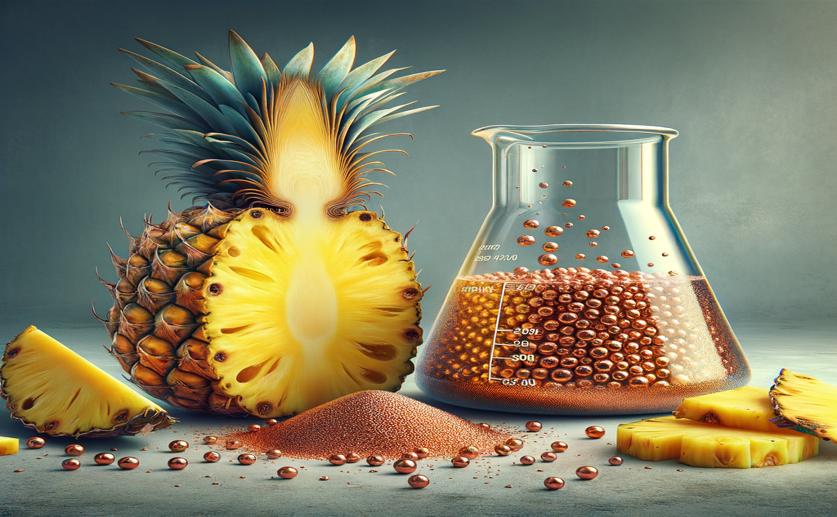
Making Copper Particles from Pineapple Peel to Kill Bacteria
Greg Howard
28th March, 2024

Image Source: Natural Science News, 2024
Key Findings
- Researchers in North Bengal used pineapple waste to create antibacterial copper nanoparticles
- These nanoparticles can potentially extend the shelf life of food by preventing bacterial growth
- The process is eco-friendly, avoiding harmful chemicals and reducing fruit industry waste
References
Main Study
1) Green synthesis of copper nanoparticles by using pineapple peel waste: in vitro characterizations and antibacterial potential.
Published 27th March, 2024
https://doi.org/10.1007/s00449-024-02982-w
Related Studies
2) Emerging Applications of Nanotechnology in Healthcare Systems: Grand Challenges and Perspectives.
3) Current Trends and Challenges in Pharmacoeconomic Aspects of Nanocarriers as Drug Delivery Systems for Cancer Treatment.
4) Green synthesis of silver nanoparticles mediated Diospyros kaki L. (Persimmon): determination of chemical composition and evaluation of their antimicrobials and anticancer activities.



 22nd March, 2024 | Jim Crocker
22nd March, 2024 | Jim Crocker